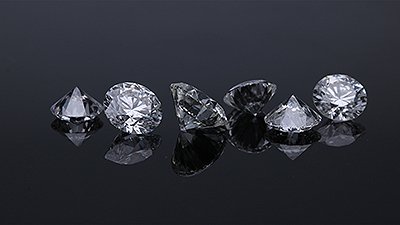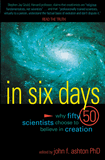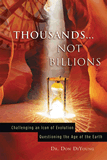
Radiometric Dating—Not Infallible
Reason 8: Radioactivity
Radioactive dating is a popular method to determine the age of various living systems.
Actually, rarely is it used to date living systems. Most are used to date rocks:1
| Method | What is it used for? | |
|---|---|---|
| 1 | Potassium–Argon | igneous rock, minerals |
| 2 | Rubidium–Strontium | igneous rock, minerals |
| 3 | Samarium–Neodymium | igneous and metamorphic rocks, minerals, lunar rocks, meteorites |
| 4 | Lutetium–Hafnium | gneiss, basalt |
| 5 | Rhenium–Osmium | molybdenite ore, metallic meteorites |
| 6 | Uranium/Thorium–Lead | igneous and metamorphic rocks, minerals |
Perhaps this “reason” is referring to Carbon-14, which has been used on things such as wood, plant remains, bone, and shells. Of course, most people know that Carbon-14 can’t give dates in the millions or billions of years because of a short half-life.
Radiocarbon dating, for example, is a technique for which the Nobel Prize was awarded in 1960 that can be used to date the age of living things because while they are alive they exchange carbon with the atmosphere, where small amounts of radioactive carbon-14 are created due to cosmic rays, but when they die they stop exchanging carbon with the atmosphere. By counting the percentage of carbon-14 in the tissue of the material and comparing it with the percentage of carbon-14 in living systems, they can see how many carbon-14 nuclei have decayed. Since carbon-14 decays on average with a half-life of 5730 years (meaning that after 5730 years half of the carbon-14 nuclei will have decayed, and after another 5730 half of the remaining carbon-14 atoms will have decayed etc), using knowledge of the abundance of carbon-14 in the atmosphere as a function of time, based on cosmic ray intensities, the earth’s magnetic field, and also on the rate at which old carbon from rocks is diluting carbon in water, etc, we can use this technique to reliably date living systems back to about 60,000 years. The ages obtained from this measurement technique are in agreement with other age determinations based on geology, etc.
Actually radiometric dating is based on uniformitarian assumptions assuming naturalism is true in the first place! There are a number of factors that could affect the accuracy of these measurements: the amount of cosmic rays in accordance with the sun’s activity (since the strength of the earth’s magnetic field has gradually been decreasing), which would affect the production of Carbon-14. Also, most scientists refuse to take into account a global flood that would have greatly affected the amount of carbon in the atmosphere. Please see “Dating in Conflict” and “Doesn’t Carbon-14 Dating Disprove the Bible?”
We can use other forms of radioactivity to make measurements of systems that are much older, however. For example potassium-40 has a half life of 1.3 billion years, uranium-238 has a half life of about 4.47 billion years, and thorium-232 has a half life of 14 billion years. Since these materials are created inside the fiery cores of stars by nuclear burning, we can measure the abundance of these parent-nuclei compared to the abundance of the daughter nuclei into which they decay to determine the age of old rocks, as well as the ages of some stars in which the abundance of these heavy elements can be measured. And not surprisingly, the ages we get all are consistent with other age determinations. The age of the earth, when determined this way, agrees well with the age of the sun, i.e. about 4.5 billion years. The ages of the oldest systems in our galaxy comes out to be about 10-13 billion years, in agreement with stellar evolution estimates, etc.
There are some key assumptions about many dating methods that are often overlooked. For example, radiometric dating uses these two things: 1) the amount of a given element, both parent and daughter in a sample at a given time; and 2) the half-life of a given radiometric decay rate at a particular point in time in a lab environment. However, to extrapolate into the unknown past requires three main unprovable assumptions.
- Initial conditions—it is assumed that when the rock was formed only the parent element (e.g. Potassium, Uranium, etc.) was present, and there was no daughter element (e.g. Argon, Lead) present;
- Closed system—it is assumed that within any given sample, no parent or daughter elements ever entered or left the sample;
- Constant Rate—it is assumed that the rate of radioactive decay has remained constant.
What evidence is there that any or all of these three assumptions are true?
There are plenty of indications that these methods are not as infallible as they would have you believe! They also fail to mention that if “bad dates” are found, they will typically throw these dates out and stick with the ones that more closely fit what they assume are to be the correct ones. “Bad dates” are dates that don’t match the assumed age of the fossils that they have found in that particular layer based on their evolutionary grand plan. Please see “Geological Conflict.”
Footnotes
- DeYoung, Don, “Thousands . . . not billions,” (Green Forest, AR: Master Books, 2005), 40.
Recommended Resources

Answers in Genesis is an apologetics ministry, dedicated to helping Christians defend their faith and proclaim the good news of Jesus Christ.
- Customer Service 800.778.3390
- © 2024 Answers in Genesis







